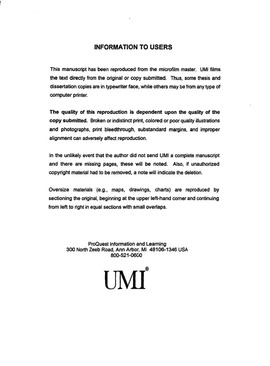| dc.contributor.advisor | Buckley, Michael R., | en_US |
| dc.contributor.author | Wheeler, Anthony R. | en_US |
| dc.date.accessioned | 2013-08-16T12:18:55Z | |
| dc.date.available | 2013-08-16T12:18:55Z | |
| dc.date.issued | 2003 | en_US |
| dc.identifier.uri | https://hdl.handle.net/11244/579 | |
| dc.description.abstract | Organizational scholars have long debated the exact nature of the construct of fit. Researchers have identified at least four dimensions of fit (P-V Fit, P-J Fit, P-O Fit, and P-P Fit), and these dimensions of fit tend to be studied as mutually exclusive constructs. The present dissertation proposed a theory of multidimensional fit that included these four dimensions of fit and proposed that these sub-dimensions of fit correspond to aspects of an individual's self-concept. Moreover, the present dissertation proposed that individuals assess multidimensional fit through a process called prototype matching; whereby the individual assesses the multiple dimensions of the self-concept and the concept of the prototypical person found in a social setting. The overlap of the self-concept and the prototypical concept predicted selection into the social setting. To test this theory, the present dissertation sampled 122 participants who were currently searching for employment. The present dissertation assessed the participants' ratings of multidimensional fit across three conditions: when the individual received no information about a target organization, when the individual received information taken directly from the target organization's website, and when the individual received a fictionalized RJP about the target organization. The results from a mixed-model ANOVA revealed that either company-provided or RJP information altered the prototypes that participants had about the target organization only if the participant possessed social job search goals. The manipulation of participant prototypes resulted in lowered job pursuit intentions. Univariate hierarchical regressions revealed that for pre-hire attraction, multidimensional fit did not predict job pursuit intentions; however, the hierarchical regression analyses revealed that multidimensional fit predicted job pursuit intentions once the participants learned about the target organization. It is suggested that organizations utilize RJPs that include realistic P-O Fit and P-P Fit but minimize the level of negative content regarding P-J Fit and P-V Fit. Implications are discussed. | en_US |
| dc.format.extent | x, 122 leaves : | en_US |
| dc.subject | Psychology, Industrial. | en_US |
| dc.subject | Unemployed Psychology. | en_US |
| dc.subject | Employee selection. | en_US |
| dc.subject | Employee recruitment. | en_US |
| dc.title | Multidimensional fit: A theory and a test of the influence of realistic job previews and pre-hire fit. | en_US |
| dc.type | Thesis | en_US |
| dc.thesis.degree | Ph.D. | en_US |
| dc.thesis.degreeDiscipline | Department of Psychology | en_US |
| dc.note | Adviser: Michael R. Buckley. | en_US |
| dc.note | Source: Dissertation Abstracts International, Volume: 64-03, Section: B, page: 1536. | en_US |
| ou.identifier | (UMI)AAI3082936 | en_US |
| ou.group | College of Arts and Sciences::Department of Psychology | |
